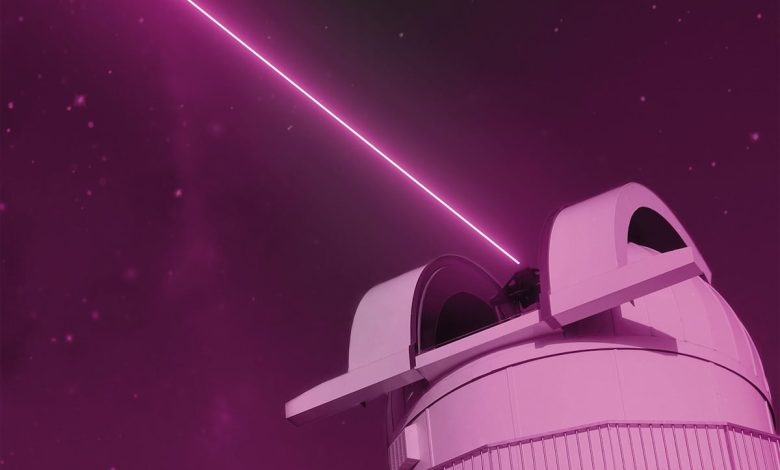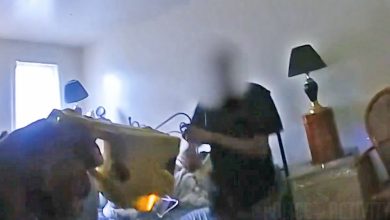France tests space lasers for secure satellite downlink in world first

PARIS — French technology firms used laser to communicate between a low-orbit nano satellite and a commercial ground station in an experiment sponsored by the French Defence Innovation Agency, with France’s Armed Forces Ministry dubbing the test a world first.
A satellite from Unseenlabs with a laser payload established a stable link for several minutes with an optical ground station supplied by Cailabs, according to the ministry, which provided €5.5 million ($6.1 million) in funding for the project. The successful test this summer opens the way to integrating the system on France’s future military satellites, the ministry said.
The point-to-point nature of lasers makes them more secure than radio frequencies, and they can’t be jammed the way radio can, Cailabs CEO Jean-François Morizur told Defense News in an interview on Thursday. Additionally, a laser link can transfer very large files such as detailed Earth images in minutes, something that might require multiple orbits using radio signals, the CEO said.
“Anti-jamming is a big one,” Morizur said. “Low probability of detection, low probability of intercept means you can deploy it in some difficult contexts, you just don’t have the same signature as an RF antenna. Putting that on a ship makes sense, because you then reduce the radio footprint of your ship – both for ship-to-ship and ship to satellite.”
The higher data rates offered by laser are important for intelligence applications, as the growing volume of detailed satellite images of Earth is creating “very, very big files” that can be “quite tricky” to transfer with today’s satellite radio transmitters, according to the Cailabs CEO.
The successful test will make it possible to use space-based laser comms on mobile, land-based, naval and airborne platforms, the Armed Forces Ministry said. While the experiment is not the first for space-to-Earth laser communications, it’s the first using a commercially available ground station, according to Morizur.
The French government is keeping some information around the testing under wraps, including details on the date or who provided the laser payload. The ministry said the Keraunos project contributes to objectives in the 2024-2030 Military Programming Law to strengthen France’s space capabilities.
One of the goals of the Keraunos optical communications satellite project is to mitigate the effect of atmospheric turbulence that can hurt transmission quality, the ministry said. While the laser system used in the test will pass through some clouds, it can’t penetrate heavy cloud cover, according to Morizur.
The changed security situation in the world has accelerated government thinking around space, “one of the battlegrounds,” with a growing realization that space supremacy will be important, according to Morizur. In addition, the reduction in launch costs and cheap access to space are speeding up the space economy, he said.
“The more the space economy is growing, the more you have new tools, it becomes a field like any other, basically, where battle happens.”
The Cailabs ground station used in the test consists of a dome with a large telescope and several smaller ones, with the complexity being in processing the laser light, “that’s kind of where the magic happens,” Morizur said. The ground station can be made truck-sized, according to the CEO. Cailabs competitors include Safran in France and BridgeCom in the United States, he said.
Cailabs has seven ground stations under contract, including the one used in the test for the Armed Forces Ministry and a second one on order for the French government, as well as stations to be built for civilian clients including the European Space Agency and South Korea’s Contec. Most orders are for civilian applications, mainly for imagery, according to Morizur.
Morizur said the market for radio satellite gateways is valued at around $3 billion a year, and while optical ground stations will initially be a fragment of that, over time the opportunity will be “in the billions.”
Cailabs is currently leading in technology, price point and product maturity with its ground stations, and was picked for a number of recent competitive contracts, according to the CEO. The company has set up a team in the United States, where it sees contract opportunities, “and we are looking forward to supporting the U.S. government in many different ways,” Morizur said.
The company, which was co-founded by Morizur in 2013 and which has raised €46 million from investors, is unprofitable for now as it continues to spend on R&D and expansion, the CEO said. Cailabs received more than €10 million in orders last year, and “we stopped calling ourselves a startup a few years ago,” he added.
Rudy Ruitenberg is a Europe correspondent for Defense News. He started his career at Bloomberg News and has experience reporting on technology, commodity markets and politics.







